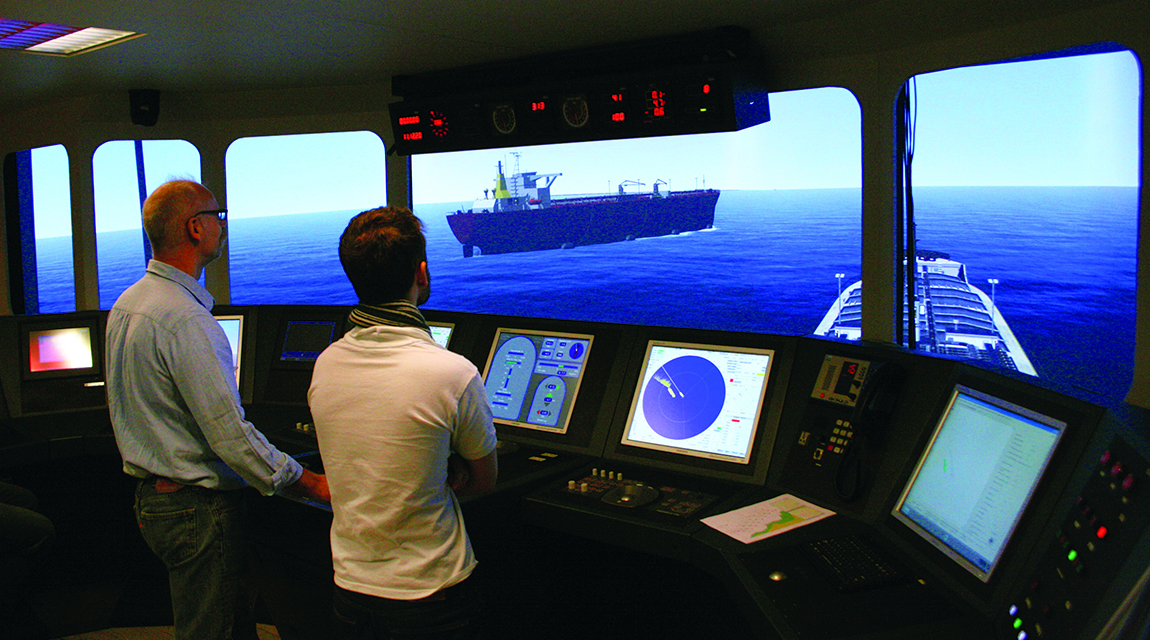Azimuth Propulsion Ship Handling
The course improves the participants' ability to utilise the azimuthing systems efficiently and safely.
Azimuthing propulsion devices give a vessel much better manoeuvrability than can be achieved with traditional propulsion systems such as rudder(s) and propeller(s). In order for shiphandlers to turn the improved manoeuvrability to advantage, they have to learn a completely new way of manoeuvring a vessel. Knowledge of the different advantages and hazards of the azimuthing systems is imperative, and in order to utilise the azimuthing systems efficiently and safely, they must achieve expert handling skills.
Goals and objectives
The aims of the Azimuth Propulsion Ship Handling training programme is to increase safe manoeuvring and navigation of vessels equipped with azimuthing propulsion.
This is done by giving the ship handlers knowledge and understanding of the manoeuvring behaviour and limitations of vessels such as large cruise vessels and tankers propelled and steered by pod propulsion systems or smaller vessels with Azipull or Z drive systems.
Course description
Ship handling courses focus on maoneuvrability and operational limits of existing or new ships. The simulator exercises ensure the best basis for real-life skills by changing and increasing environmental factors such as wind and current until the operational limits for harbour manoeuvres are met. In contrast to on-the-job training, simulator training ensures that all trainees achieve a high and uniform level of competence as all trainees have been through the same predefined curriculum.
The course contributes to increased safety and effectiveness on board. A well-trained, professional and motivated crew that is continuously updated on manoeuvring theory as well as handling of specific ships under normal and extreme conditions will most likely reduce the incident and accident rate and enhance efficiency.
We also offer the participants the opportunity to use coupled simulators acting as tugs during harbour manoeuvring. The participants can hereby control the tugs in order to ensure a better understanding of the possibilities and limitations of modern ASD tugs.
Gains
After the course, the participants will be able to:
- perform practical vessel manoeuvring (i.e. large cruise vessels)
- test and improve manoeuvring strategies
- use sea/cruise mode, harbour/manoeuvring mode, backup mode, joystick strategies and failure mode
Adjustable training content
The course consists of theoretical lectures, simulator exercises and debriefings with the use of sophisticated replay tools. The structure as well as the topics of the course will be adjusted during the course in order to suit the requirements and skills of the participants. Moreover, the course content and exercises can be altered based on the input and knowledge level of the participating officers.


